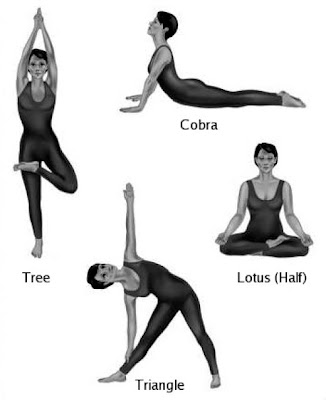Power Yoga is the Western version of the Indian Ashtanga Yoga which emphasizes developing one's physical flexibility and nurtures the desire for self-discipline.
The name Power Yoga says it all. It is one of the several types of Yoga that has the same potential of emulating a rigorous full-body workout and promotes mental stability and concentration. Be forewarned though that Power Yoga practice may hurt at first.
The concept of Power Yoga was introduced to the West by devotees of Sri K. Pattabhi Jois, a renowned Sanskrit scholar who inspired Western Yogis with his Ashtanga Yoga style and philosophies. It's a small wonder why Power Yoga is considered as the Western version of the Indian Ashtanga Yoga. The term "Power Yoga," however, was coined by Ashtanga Yoga teacher Beryl Bendere Birch, author of the widely-read book "Power Yoga: the Practice."
Although Power Yoga is a shortened and modified version of Ashtanga Yoga, it also borrows certain aspects from other Yoga practices like Bikram Yoga and Iyengar Yoga. Some of those aspects are as follows:
1. Power Yoga requires the execution of basic Yoga Poses, like in Bikram Yoga, which guarantees an energetic workout and offers basic challenges that can be done even by beginners in Yoga.
2. Power Yoga also emphasizes on the proper form in executing Yoga Poses as well as perfecting it by holding the pose longer, improving the endurance and flexibility of the person. This is an aspect adapted from the Iyengar Yoga.
Power Yoga is done by doing a series of Yoga Poses while synchronizing one's breathing patterns to each movement, or Vinyasa, resulting in actions with perfect unity and grace. In the eyes of a person who does not practice Yoga, the movement may seem soft and free-flowing, comparable to a trancelike dance. But in the perspective of a Power Yogi, the process is like a vigorous exercise, pushing and contorting every limb to its limit while maintaining a strong sense of inner peace and concentration to pull off each move flawlessly and gracefully.
Keep in mind that the transitions of the Yoga Poses are done in a slow yet steady pace. Some poses are even held longer than the required five breaths. This is the aspect of Power Yoga that raises one's physical endurance and the ability to focus on one task for a long period of time without breaking one's concentration.
The poses involved in Power Yoga are linked on the backbone of Sun Salutation Pose. Hence, anybody who is interested in doing the poses of the former Yoga exercise should at least be knowledgeable of the latter.
Warm-ups are usually done before a session of Power Yoga to relax and stretch the muscles of the body. In addition to that, Power Yoga is usually done in a heated room for a Yogi to achieve optimum muscle flexibility. This is because the moves involved in it can be very painful to successfully pull off to those who are new to Power Yoga. Therefore, it is imperative to condition the body before going through this rough and rigorous type of Yoga. This feature of Power Yoga limits the Yogis to those who are physically fit and are not suffering from chronic ailments.
But even though Power Yoga demands certain requirements for a person to fully enjoy it, a lot of enthusiasts are still loyal to the practice. It's actually attracting more and more people to try it out. Here are some benefits that can be drawn out from Power Yoga:
a. It bolsters strength, stamina, and flexibility.
b. It improves one's ability to focus.
c. It's a great way to release tension and anxiety.
d. It helps a person maintain proper posture.
e. It tones your body well.
f. It's a good way to remove bodily toxins through sweat.
g. It serves as a great training for athletes.
h. It helps improve a person's performance in certain sports like Cycling, Golf, football, and swimming.
Those are some of the reasons why most Health clubs nowadays promote Power Yoga and a direct transition from Aerobics to Yoga.
But despite its vigorous approach in Yoga, Power Yoga still focuses on the general aim of Classical Yoga, which is to unite the body, mind, and spirit. It uses traditional Yoga practices in order to tap in to the inner core of one's power and to help this individual to recognize the different levels of power which are:
* The physical power which is developed through the poses in Power Yoga resulting in an improvement of the body's natural strength and health.
* The mental power or the willpower, which is disciplined during the course of the practice as it clears the mind of unorganized thoughts and helps the self to concentrate on a single task.
* The spiritual power, the driving force behind one's physical and mental power, is nurtured, allowing complete mastery of one's thought and actions.
Finally, it is through Power Yoga that a person can achieve total unity since it connects the body, mind, and spirit in the deepest level.
Related Post :
How Do Yoga ExercisesHow To Do Yoga Practice At Home5 Tips How to Do Yoga For BeginnersHow To Do Yoga Practice Easy






























